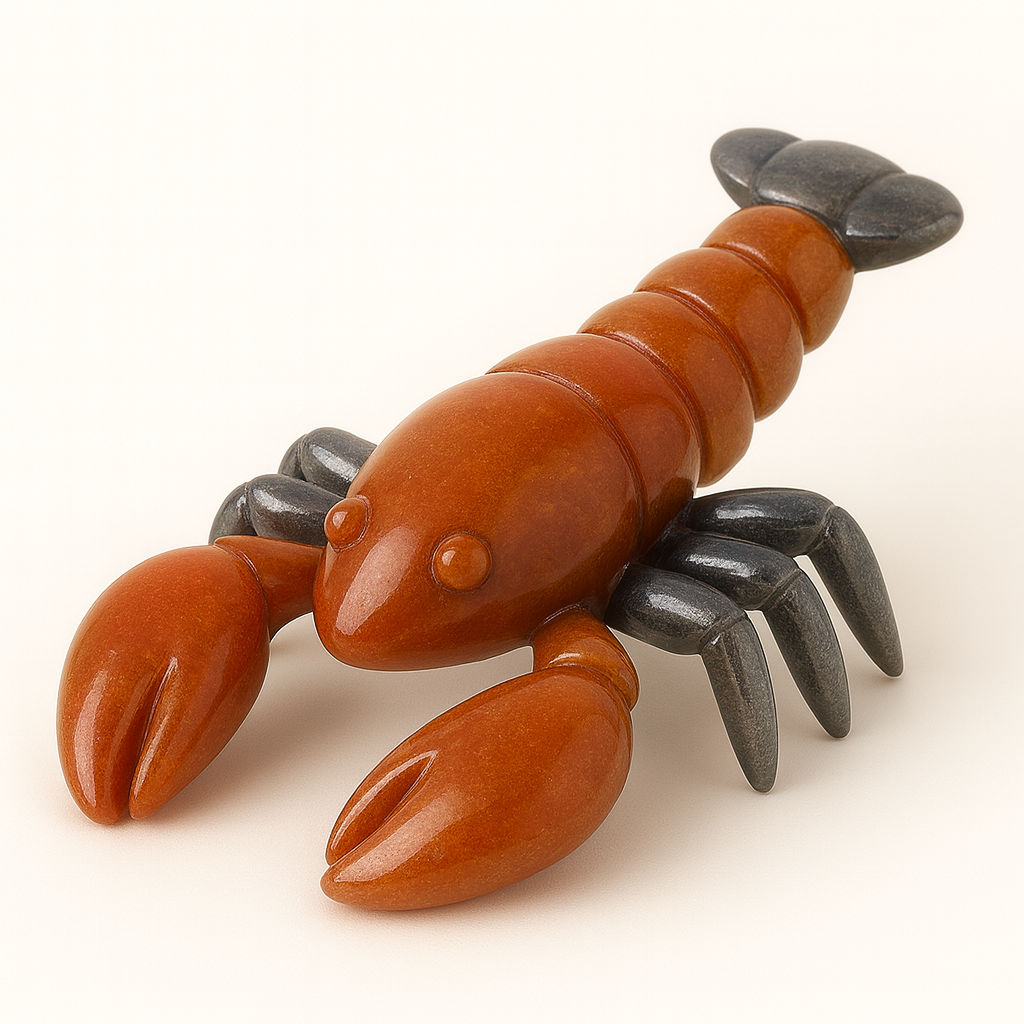
The Symbolism of Lobsters
Share
Armored yet vulnerable, ancient yet adaptable, the lobster moves through the ocean’s hidden corridors with a cautious grace. It does not swim with the fish, nor drift with the tide—it walks sideways, backward, according to its own rhythm. The lobster is an emblem of resilience through cycles, sensitivity beneath protection, and the soul’s capacity to grow by shedding what no longer fits.
To contemplate the lobster is to encounter the archetype of the quiet transformer, of strength forged through molting, and of the being who learns to release its shell so it may live again.
The Deep Dweller in Cultural Memory
In certain coastal traditions, the lobster is seen as a creature of mystery and longevity, often associated with wisdom gained through hardship. Its hard shell and unusual movement led some ancient seafarers to view it as a keeper of secrets, a symbol of the hidden path and the slow unfolding of deeper knowledge.
The lobster’s regenerative qualities—particularly the ability to regrow lost limbs—earned it a place in symbolic systems as a totem of healing and renewal, reflecting nature’s lesson that what is lost may return, not as before, but as a sign of resilience.
In alchemical metaphors, the lobster stands between elements—of water, yet armored like earth, and its life cycle mirrors transmutation: it must periodically shed its hardened form, growing soft and exposed, before a new exoskeleton forms. Thus, it became an image of the cost of evolution and the necessity of temporary vulnerability in service to growth.
Shell, Sea, and the Wisdom of Shedding
The lobster lives encased, yet not immobile. Its shell is both sanctuary and limit. When it grows, the old shell must be left behind, and in that time of molting, the lobster is entirely unprotected. It teaches that true transformation always involves risk, that growth requires surrender of structure, even at the cost of temporary defenselessness.
Its movements are indirect—sideways, backward, exploratory. This is not confusion; it is attunement to the terrain, a refusal to force forward progress when truth lies elsewhere. The lobster honors the labyrinth, and in doing so, reveals that wisdom is not always linear.
Its long antennae, fine-tuned to touch and vibration, show an extraordinary sensitivity beneath its armor. The lobster does not rely on sight—it feels. It teaches that true perception is not always external—it is the energy read beneath the surface.
Resonance with the Energy Centers
The lobster resonates primarily with the orange-ray energy center—the sacral chakra, which governs emotional sensitivity, adaptation to relational dynamics, and the cycles of vulnerability and intimacy.
Its molting process, its reactive motion, and its tactile awareness all reflect a powerful orange-ray field—one that understands the value of emotional exposure and the inevitability of change. The lobster shows that to evolve emotionally, one must sometimes become soft again, releasing protective forms in order to grow.
There is also a secondary resonance with the red-ray energy center—the root chakra, which governs physical survival, instinctual rhythm, and the anchoring of transformation within the body.
The lobster survives in a world of predators and pressure. Its instincts are honed not by fear, but by measured caution and embodied knowledge. Its life beneath the sea reflects red-ray strength not through domination, but through wise navigation of the physical realm.
Together, orange and red circulate through the lobster as:
emotional growth grounded in survival,
vulnerability held within structure,
and instinctual wisdom shaped by cyclical transformation.
The One Who Grows by Letting Go
To walk with the lobster is to learn that safety can become stagnation, that the shell that once protected may become the prison, and that freedom often begins with softening. The lobster teaches the seeker to shed with purpose, to move in unexpected directions, and to trust that the soul’s true shape requires time, tenderness, and the willingness to be unguarded in sacred moments.
The lobster does not break its shell.
It leaves it behind.
It does not chase light.
It feels its way through shadow.
It teaches:
Outgrow.
Feel more than see.
And know that strength is not hardness—it is the courage to molt.